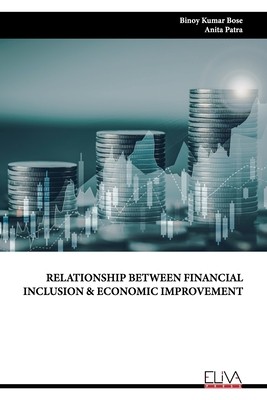
- We will send in 10–14 business days.
- Author: Anita Patra
- Publisher: Eliva Press
- ISBN-10: 9994983873
- ISBN-13: 9789994983872
- Format: 15.2 x 22.9 x 1.7 cm, softcover
- Language: English
- SAVE -10% with code: EXTRA
Relationship Between Financial Inclusion & Economic Improvement (e-book) (used book) | bookbook.eu
Reviews
Description
Motivated by the regulatory changes undertaken in India through the banking system for enhancing access of people to financial services, this study investigates relationship of financial inclusion with economic growth. It has drawn its conclusions from empirical evidences collected from beneficiaries of inclusive policies in a chosen district of the country. Using statistical hypothesis testing procedures like t-Test and ANOVA for inferential analysis, it has been found that financial inclusion has significantly positive relation with growth and poverty alleviation. As per the key findings of the study, it has been statistically proved through empirical evidences that there has been significant interventions from the side of the Government for financial inclusion in Khordha district and because of these financial inclusion initiatives a significant economic growth led by financial inclusion has happened in the district. But, as per the study economic growth led by financial inclusion has not happened uniformly across demographic segments. Rural population, people in younger age group, male, well educated and mostly with small businesses as their occupation have been benefitted most by the FI intervention. Though there are many positive signs in this, still it cannot be ignored that female population and those who are less educated have not been benefitted more.
EXTRA 10 % discount with code: EXTRA
The promotion ends in 20d.18:43:31
The discount code is valid when purchasing from 10 €. Discounts do not stack.
- Author: Anita Patra
- Publisher: Eliva Press
- ISBN-10: 9994983873
- ISBN-13: 9789994983872
- Format: 15.2 x 22.9 x 1.7 cm, softcover
- Language: English English
Motivated by the regulatory changes undertaken in India through the banking system for enhancing access of people to financial services, this study investigates relationship of financial inclusion with economic growth. It has drawn its conclusions from empirical evidences collected from beneficiaries of inclusive policies in a chosen district of the country. Using statistical hypothesis testing procedures like t-Test and ANOVA for inferential analysis, it has been found that financial inclusion has significantly positive relation with growth and poverty alleviation. As per the key findings of the study, it has been statistically proved through empirical evidences that there has been significant interventions from the side of the Government for financial inclusion in Khordha district and because of these financial inclusion initiatives a significant economic growth led by financial inclusion has happened in the district. But, as per the study economic growth led by financial inclusion has not happened uniformly across demographic segments. Rural population, people in younger age group, male, well educated and mostly with small businesses as their occupation have been benefitted most by the FI intervention. Though there are many positive signs in this, still it cannot be ignored that female population and those who are less educated have not been benefitted more.


Reviews